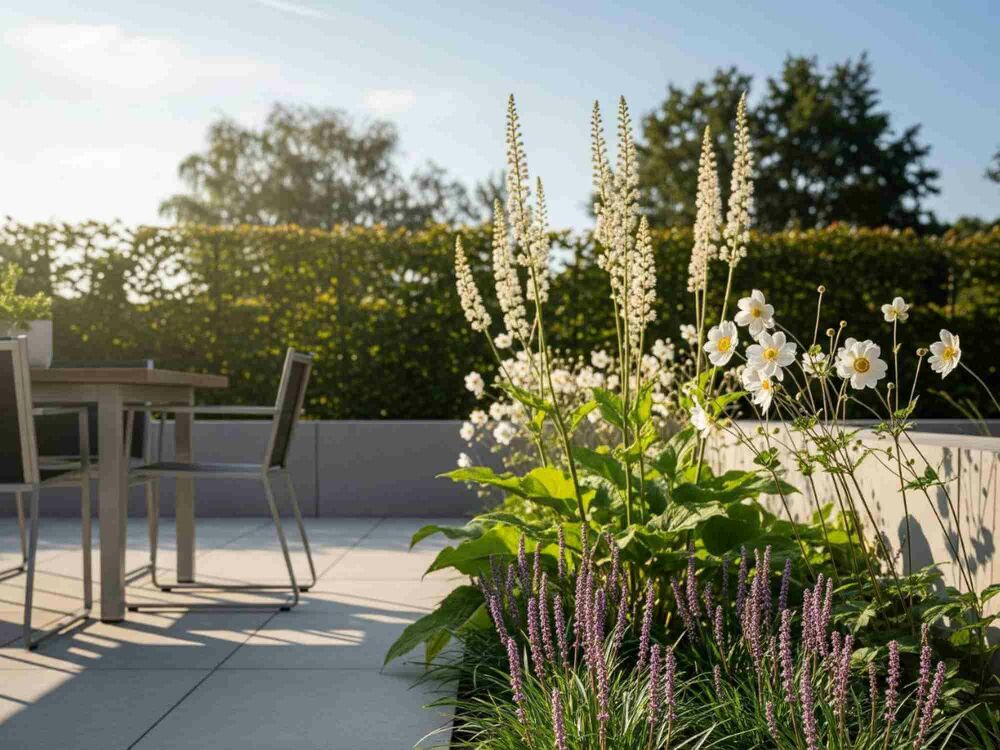Hedging plants are more than a great way to fence off your garden
For years and years hedge plants have been used for fencing off gardens. Between the neighbor's garden and your own. Between the street and your own domain. Just to indicate: up to here? That’s mine, the rest is yours. And of course, in addition to being a beautiful partition, hedging plants are also a great shelter. Against the view of prying eyes, but also against the annoying, strong wind. But have you ever thought of using a hedge plant in your garden to separate certain plants, terraces or other garden areas?
Garden partition is mainly for privacy
Okay, you probably know the hedge plants when you think of green garden fences. Think for example of the green beech hedge (Fagus Sylvatica) or the hornbeam (Carpinus Betulus). Of course you can also use the yew for this, the Taxus Baccata for example, or the Taxus Baccata David, the Taxus Media Hicksii or the Taxus Media Hillii. They all provide fine, green shelter where many birds take up residence and also give you a lot of privacy. Some species have such dense foliage that no one can see through it at all. Ideal! In addition, the higher hedge plants also ensure that they break the wind to a large extent, so that even in windy weather you can sit outside and enjoy your garden to the fullest.
Low hedges bring structure to your garden
That was the more traditional way of using hedge plants in your garden, which everyone knows. But you can do much more with hedge plants. How about giving structure to your garden. If you like it sleek and formal then you can make them into lower hedges, which offer a nice view in your garden. With the hedge plants, you can also create flowerbeds with beautiful shapes. Round, square or rectangular. Perhaps even symmetrical. For example, 3 compartments on the left. 3 compartments on the right. Or 2. Or 4. It depends on how big your garden is of course. In these compartments you could for example place different plants or herbs as you wish. Consider roses, lavender, anemones or something completely different.
Hedging plants: also for a more natural, informal garden
If you do not like a very neat, tight, formal garden, but more of a casual or natural garden, then you can certainly use hedge plants. In this case, it is wise to check which hedge plant you do not have to prune so often or ever. Because if this is your style, you would prefer that the plant, as a solitary plant, in the garden or in a hedge - radiates a little nonchalance like the rest of the planting. Unfortunately, this is not possible with a rigid hedge. You can also get an informal atmosphere with trimmed hedges. In this case it is advisable to keep more rounded shapes.
Low hedge plants show you the way through your garden
You can also place hedge plants along the walkways in your garden. Low to the ground if you want to keep an overview. Think for example of the boxwood (Buxus Sempervirens), the holly (Ilex) with the three different species: the Ilex Crenata Dark Green, the Ilex Crenata Green Hedge or the Ilex Crenata Convexa. Have you ever been to the gardens of Paleis Het Loo? There they have miles of low hedges along the walkways. A beautiful sight!
Tall hedge plants can create more depth
Of course you can also turn the garden into a kind of labyrinth, or maze. Then you opt for higher hedges and make your garden a little more exciting.
Fun for the (grand)children! But also for yourself if you like more depth in your garden. For this the Thuja with its different types, Thuja Occidentalis Brabant, Thuja Occidentalis Smaragd, Thuja Plicata Atrovirens, Thuja Martin and Thuja Excelsa are perfectly suited. You can also choose the privet hedge, to be precise, the Ligustrum Ovalifolium, the Ligustrum Vulgare, the Ligustrum Vulgare Atrovirens or the Ligustrum Vulgare Lodense.
The possibilities are endless with hedge plants! More than you might have thought at first.



